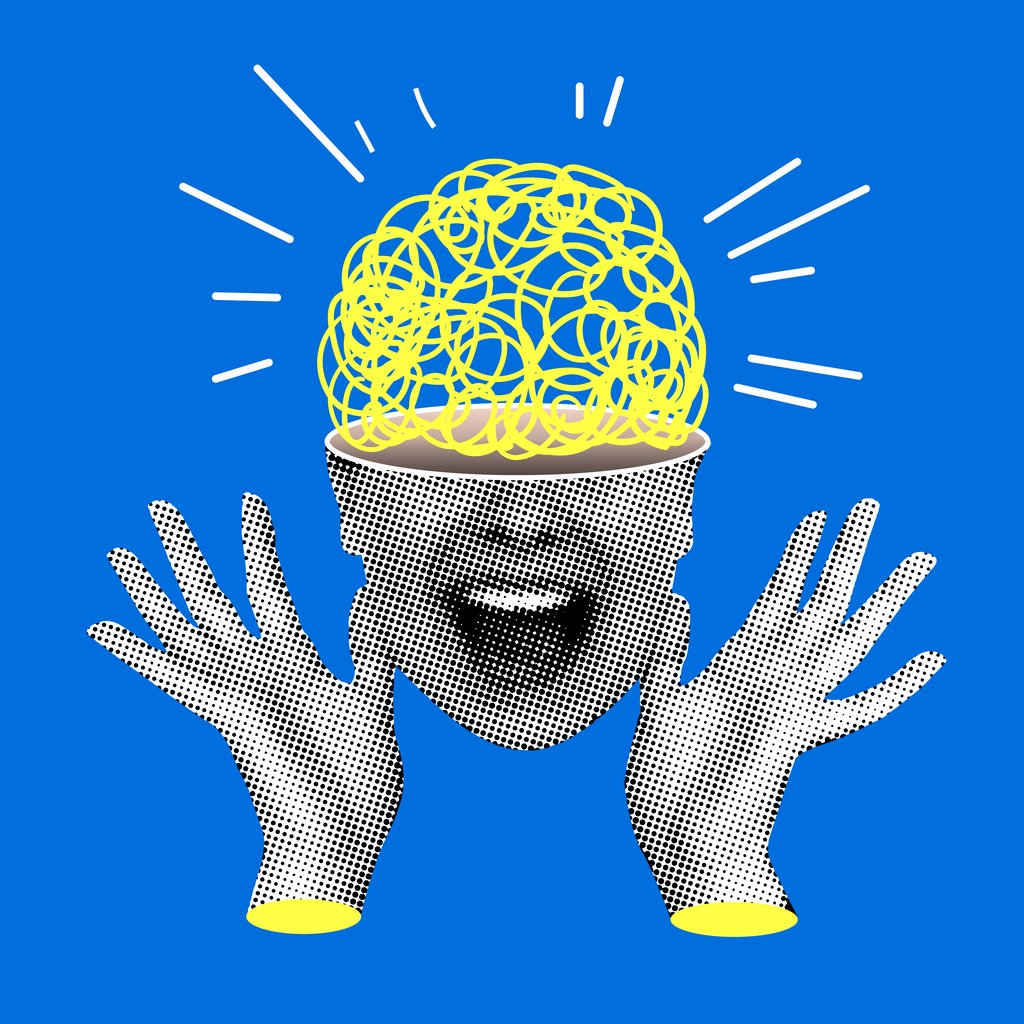
Erin Anderssen
Aug. 8, 2024
There are no exams in Bruce Hood’s Science of Happiness course. The main assignment of the first-year class is to practise what they learn. At lectures, cellphones are banned, and Dr. Hood begins by asking everyone to chat with the person beside them. Some days, he hands out lollipops to the 300 students crowding the concert hall at the University of Bristol in England; they bring him candy in return. One afternoon, a classmate spontaneously serenaded the class with the grand piano that sits on the stage.
There are so many freshmen wanting to take the course that Dr. Hood, a Canadian-born developmental psychologist, now lectures in the morning, and again in the afternoon. He sometimes sees the same students at both classes.

iStock-2155397199
At universities across North America, happiness courses pack in the students. Outside the classroom, there are enough happiness podcasts for a dedicated radio station, hours of YouTube videos to occupy those very early mornings when you are lying awake with existential angst, life coaches to guide you to happier choices, well-being teaching apps and online certificates to affirm your happiness credentials. The truly diligent happiness-seekers can now take an online Masters of Happiness at Centenary College in the United States.
Our pursuit of a joyful existence sometimes seems so fervently exhausting as to cause its own despair. But then, what other quest has so deeply occupied humanity than the search for happiness?
For centuries, people have been debating, preaching, rhyming and philosophizing about the definition of happiness and how we can get more of it. Scientists have joined in with human experiments and brain scans. Economists are busy measuring it. Meanwhile, business schools are churning out well-being consultants to increase productivity: Happy workers are productive workers.
In North America, happiness is now a multibillion-dollar business based on the idea that people – even those predisposed to crankiness – can learn to be happy. But finding – and keeping – happiness is hard, otherwise we’d surely have figured it out by now. That’s no reason to give up, science suggests. A happiness course can set people on a more focused path. But achieving a regular dose of joy requires doing the homework. In fact, that might just be the secret to a happier life.
Dr. Hood, for his part, began as a skeptic. He sided with critics who argued that the field of positive psychology – the study of happy emotions instead of sad ones – was rife with spurious claims, sweeping conclusions and questionable experiments that couldn’t be replicated. Happiness research has been based almost entirely on Western, usually white, university students. And too many how-to-be-happy books focused on individual self-care, when real happiness, Dr. Hood believed, is sustained by serving the needs of others.
At the same time, his students were anxious, stressed and obsessed with grades, which made them hard to teach. One of his former graduate students, Laurie Santos, had already started her own now-famous course at Yale University. Psychology and the Good Life quickly became one of the most popular classes ever on campus – when offered online for free during the pandemic, millions of people around the world signed up to take it.
Dr. Hood reached out to Dr. Santos for advice, and in 2018 launched the Science of Happiness. Soon, he started to see the difference his course made in many of his students’ lives – along with an increased scientific rigour in the study of happiness itself. “I was now a convert,” he writes in his new book, named after his course, which will be published in North America later this year. He’d come around to the idea that happiness could – and should – be taught, right alongside math and history.
Courses like the one that Dr. Hood developed connect psychological research with self-help lessons on how to become happier. Over 10 lectures, Dr. Hood teaches his students about “mind bugs,” explaining how their brains, ever-watchful for threats, naturally amplify bad news. He describes the double-edge sword of “hedonic adaption,” which is why human beings adjust to terrible events, but also lose the spark for joyful activities. He uses science to show why we overinvest in what other people think. He coaches the class not to fear failure. Practising gratitude, he tells them, can improve their perspective. Talking to strangers will make them – and the stranger – happier.
Such happiness classes have become popular at the same time that national well-being is an increasing consideration for policy-makers and researchers.
In the World Happiness Report 2024, Canada ranks a respectable 15th, well behind Finland and Denmark, who take gold and silver respectively, but significantly ahead of Britain (20) and the United States (23).
But even here, in one of the safest, more prosperous of nations, mental-health issues are rising. Teenagers self-report higher levels of stress and depression. Angst and anxiety is the new pandemic.
“Happiness always seemed like a fleeting concept,” says Matteo Zappone, a 24-year-old university student who was raised by loving parents in a financially secure household in Montreal. Despite his privileged upbringing, “I could never hold on to it.”
He listened to podcasts and TED Talks for advice on becoming happier, sought guidance from a therapist. But an inner voice battered him down, telling him he wasn’t good enough, smart enough, popular enough. During times when he felt sad, he’d think, “Why can’t I find an easier way to be happy?”
But as Mr. Zappone soon learned, it is possible to be happier. A class at Dawson College helped him realize he’d been looking for happiness in the wrong direction. To find it, he had to practise. As happiness experts such as Dr. Hood would argue, that’s a lesson we can learn at any age.
To a certain extent, all happiness training – and most happiness books – are based on the theory of the Happiness Pie. Published in 2005, the pie graph divided the factors of happiness into tidy pieces. Fifty per cent, the researchers proposed, was genetics. Life circumstances accounted for a sliver, at 10 per cent. That left 40 per cent under the control of a person’s intentional behaviour. This is the portion, the idea proposed, that we can harness for more happiness.
But in the past few years, the pie theory has been challenged by critics who point out that its authors relied on a narrow batch of studies, made leaps with the data, and failed to consider that genetic, environmental and life choices are not separate slices but a complex, connected, interacting web. One of the lead authors of the happiness pie paper, Sonja Lyubomirsky, whose bestselling book, The How of Happiness, has a pie image on its cover, has defended the model as a thought experiment meant to propose people can influence their own happiness. But even she conceded in a 2019 paper that the model had likely outlived its usefulness.
For starters, suggesting that only 10 per cent of happiness was based on life circumstances grossly underestimates the impact of racism, poverty and family trauma on mental health. Happiness experts like to quote the Greek stoic philosopher Epictetus, who himself was born into slavery, “It’s not what happens to you, but how you react to it.” That’s reasonable if you fail a test or lose a promotion. But what if you can’t feed your family or your partner is abusive? A gratitude journal won’t solve those problems.
At the same time, some people do win the happy gene lottery. Twin studies suggest that a certain set-point of happiness is about 50-per-cent inherited – roughly the same as intelligence, Dr. Hood notes. Grumpy types may need stronger happiness interventions. Others are born leaning toward optimism – Dr. Hood considers himself among them. It’s probably what made him more resilient during a difficult childhood with an alcoholic father. But he now deliberately practises happiness skills, especially gratitude. “I am happier now that I practise what I preach,” he says.
But happiness levels also change – for better and worse – as people marry, have kids and age, traditionally following a U-curve across lifetimes. The party years of our 20s are peak joy; the 40s, burdened by kids, bills and aging parents, are the lowest. Things start to turn around 50, and in our (hopefully) wise, old years, we often get our happiness back again.
That means at least some happiness is under our control. This can be a hard sell, since many people believe what psychologists have called the “end of history illusion.” They easily accept that they changed in the past, that their personalities, goals and values evolved over time. But in the present, they think they are who they are. “There’s just a bias to assume that the past can change but not the future,” says Dr. Hood. “Positive psychology gets you to reframe and rethink about things, and that works at every age.”
But if happiness is changeable, what works to change it? A couple of years ago, University of British Columbia researcher Elizabeth Dunn and PhD candidate Dunigan Folk decided to assess the scientific evidence for the most well-known happiness interventions.
They set a high bar for the research they included. The studies had to focus on people without a clinical mental-health diagnosis – in essence, those striving, more generally, to be happier. They also limited their analysis to studies that evaluated positive mood, had larger sample sizes and were preregistered, which means scientists conducting experiments publish their methodology in advance and agree to publish the result no matter what.
A significant criticism of psychology experiments has been that researchers, finding no results on the first go, either added subjects to the study or used different measurements until they found a desired result. In some cases, studies that found nothing simply weren’t published. Even well-known experiments could not be replicated. Also, most studies don’t follow participants long-term, and can’t say what happens to their happiness down the road.
Based on their small number of qualifying studies, Dr. Dunn and Mr. Folk found that science is far from settled on whether the most common interventions, such as gratitude journals and mindfulness, can produce long-term happiness. But they did find evidence that people could get a short-term boost by taking walks in nature and being more social with strangers.
Adding novelty to familiar experiences – such as treating regular weekends as vacations or eating popcorn with chopsticks – also provided a shot of happiness, even if, as the authors note, people pretty quickly realize that Saturday errands are not, in truth, a vacation. And one of the most well-designed studies supported the easiest happiness practice of all: smiling.
Sustaining happiness may be impossible. (How would we know joy, the ancient philosophers would note, if we didn’t experience sorrow?) But a bounce in happiness is nothing to frown at.
“Maybe a small boost every day can have important consequences,” surmises Mr. Folk. “We certainly spend 10 minutes a day on things that are a lot less consequential and probably negative.”
Many of the students who finish Dr. Hood’s course do self-report higher levels of happiness than when they started. In March, a team of British researchers, including Dr. Hood, published a preregistered study that followed up with 228 students who had taken his course at Bristol two years earlier. Half of the students did maintain a better mood afterward. But they were the ones who continued to use the lessons they’d learned, the same way we have to keep working out to stay in shape.
“It’s like physical effort,” says Dr. Hood. “It requires constant practice.”
The increase in the students’ well-being was small – about 10 to 15 per cent, on average. “People might say that’s not life-changing,” Dr. Hood says. “But who wouldn’t want to be 10 or 15 per cent wealthier or healthier?”
In his third year at Dawson College, Mr. Zappone took a course that transformed the way he had thought about happiness.
The course was designed by Catherine O’Brien, a professor of education at Cape Breton University who coined the term “sustainable happiness” – a theory of happiness that focuses on not exploiting other people, the environment or future generations. The course poses a big-picture question: As we individually pursue a more joyful life, when does humanity’s collective happiness come first?
Dr. O’Brien’s course teaches the familiar happiness practices – gratitude, mindfulness, self-compassion – but frames them around the student’s connection to the world around them. They are coached, for example, not only to mindfully drink their coffee in a quiet moment, but also to consider where that coffee came from, to be appreciative of those who grew it, to contemplate their place in a larger system.
“Who or what has our life touched in that moment?” Dr. O’Brien says. She felt this was missing from positive psychology, and, at best, handled vaguely in self-help books. “Our choices impact not only ourselves but other people.”
Again, the evidence that the course creates long-term happiness is limited. But for Mr. Zappone, who is now studying education at McGill University, the class helped him see that “all that striving often left me unhappy.” Instead, he gained perspective. Happiness is a day-to-day feeling, he says, not a point to reach, and it appears in different forms.
“There is the happiness when you look at a baby, and start smiling instinctively, or when you see a cute dog and your face lights up,” he says. “But when you see a beautiful sunset, you are not jumping for joy. You feel appreciation and awe. It is a humbling sort of happiness.”
For his class project, Mr. Zappone assigned himself 30 dates in nature. He ate lunch on the shore of Lake Ontario, tracked the origin of the food he ate and talked to the plants in the forest. Instead of being depressed by climate change, he felt more hopeful and connected to the larger world. He learned to sit with a solemn kind of happiness, no less powerful than joy. His next step, he says, is to turn the practice of happiness into social action.
“It was helpful for me to understand how big the network of life is,” he says. “And how amazing it is to be human, just to be talking now to someone else about the concept of happiness.”
That concept, as history shows and research reveals, will mean different things to different cultures and individuals, depending on our life stages and circumstances. The happiness industry may oversell the science. But in its most thoughtful form, it also prompts reflection in an age of reaction.
Think of happiness practices as a buffet of options, Mr. Folk suggests. Discard what doesn’t work, repeat what does. And, along the way, bask in the moments when you experience joy.
This Globe and Mail article was legally licensed by AdvisorStream.
© Copyright 2025 The Globe and Mail Inc. All rights reserved.


